 W
WLouisiana was a dominant population center in the southwest of the Confederate States of America, controlling the wealthy trade center of New Orleans, and contributing the French Creole and Cajun populations to the demographic composition of a predominantly Anglo-American country. In the antebellum period, Louisiana was a slave state, where enslaved African Americans had comprised the majority of the population during the eighteenth-century French and Spanish dominations. By the time the United States acquired the territory (1803) and Louisiana became a state (1812), the institution of slavery was entrenched. By 1860, 47% of the state's population were enslaved, though the state also had one of the largest free black populations in the United States. Much of the white population, particularly in the cities, supported slavery, while pockets of support for the U.S. and its government existed in the more rural areas.
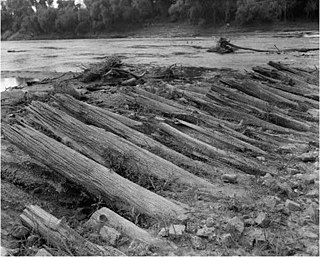 W
WBailey's Dam was a timber dam on the Red River in Alexandria, Louisiana. It was built in 1864 during the Red River Campaign in the American Civil War. It was planned by Lieutenant Colonel Joseph Bailey to afford passage over the Alexandria rapids for part of Rear Admiral David Dixon Porter's Mississippi River Squadron. The dam successfully raised the level of the river and was then breached in order to allow the boats in its reservoir to pass downstream.
 W
WBaton Rouge National Cemetery is a United States National Cemetery located in East Baton Rouge Parish, in the city of Baton Rouge, Louisiana. It encompasses 7.7 acres (3.1 ha), and as of 2020, had over 5,000 interments.
 W
WThe Bayou St. John Confederate Submarine is an early military submarine built for use by the Confederate States of America during the American Civil War.
 W
WBenjamin Franklin Butler was a major general of the Union Army, politician, lawyer and businessman from Massachusetts. Born in New Hampshire and raised in Lowell, Massachusetts, Butler is best known as a political major general of the Union Army during the American Civil War, and for his leadership role in the impeachment of U.S. President Andrew Johnson. He was a colorful and often controversial figure on the national stage and in the Massachusetts political scene and ran several campaigns for Governor before his election to that office in 1882.
 W
WCamp Moore, north of the Village of Tangipahoa near Kentwood, Louisiana, was a Confederate training base and principal base of operations in eastern Louisiana and southwestern Mississippi. The base was named for Louisiana Governor Thomas Overton Moore. It operated from May 1861 to 1864 during the American Civil War. Confederate monuments were erected at the cemetery and on the grounds in the early 20th century.
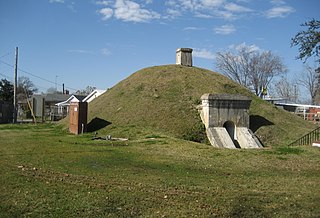 W
WCamp Parapet was a Civil War fortification at Shrewsbury, Jefferson Parish, Louisiana, a bit more than a mile upriver from the current city limits of New Orleans.
 W
WFort Beauregard, located half a mile north of the village of Harrisonburg, Catahoula Parish, Louisiana, was one of four Confederate forts guarding the Ouachita River during the American Civil War. In 1863, four Union gunboats attacked it, unsuccessfully.
 W
WFort DeRussy, located south of Alexandria, Louisiana, and four miles (6 km) north of Marksville, was a Confederate earthwork stronghold during the American Civil War. It was built in 1862 to defend the lower Red River Valley in Louisiana. Located in Avoyelles Parish, the fort, cemetery and water batteries were designated as a state historic site in 1994. The fort and the water battery were listed on the National Register of Historic Places in 2016.
 W
WFort Macomb is a 19th-century United States brick fort in Louisiana, on the western shore of Chef Menteur Pass. It is listed on the National Register of Historic Places. The fort is adjacent to the Venetian Isles community, now legally within the city limits of New Orleans, Louisiana. This community was some miles distant from the city when first built and is still distant from the main developed portion of the city.
 W
WFort Pike State Historic Site is a decommissioned 19th-century United States fort, named after Brigadier General Zebulon Pike. It was built following the War of 1812 to guard the Rigolets pass in Louisiana, a strait from the Gulf of Mexico, via Lake Borgne, to Lake Pontchartrain bordering New Orleans. It was located near the community of Petite Coquille, now within the city limits of New Orleans.
 W
WFort St. Philip is a historic masonry fort located on the eastern bank of the Mississippi River, about 40 miles (64 km) upriver from its mouth in Plaquemines Parish, Louisiana, just opposite Fort Jackson on the other side of the river. It formerly served as military protection of New Orleans, some 80 miles (130 km) up the river, and of the lower Mississippi River.
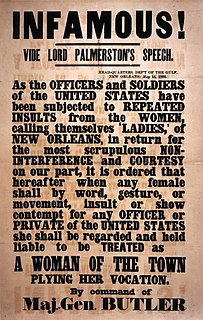 W
WGeneral Order No. 28 was a military decree made by Maj. Gen. Benjamin Butler during the American Civil War. Following the Battle of New Orleans, Butler established himself as military commander of that city on May 1, 1862. Many of the city's inhabitants were strongly hostile to the Federal government, and many women in particular expressed this contempt by insulting Union troops.
 W
WLSNS Governor Moore was a schooner-rigged steamer in the Confederate States Navy.
 W
WGrant's Canal was an attempted military-use canal through De Soto Point in Louisiana, across the Mississippi River from Vicksburg, Mississippi. During the American Civil War, United States Navy forces attempted to capture the city of Vicksburg in 1862, but were unable to do so with army support. Union Brigadier General Thomas Williams was sent to De Soto Point with 3,200 men to dig a canal capable of bypassing the strong Confederate defenses around Vicksburg. Despite help from local plantation slaves, disease and falling river levels prevented Williams from successfully constructing the canal, and the project was abandoned until January 1863, when Union Major General Ulysses S. Grant took an interest in the project.
 W
WCSS J. A. Cotton was a Confederate sidewheel partial ironclad gunboat that was burned by her own crew in Bayou Teche off Brashear City, Louisiana, United States on 15 January 1863 to prevent her being captured by Union forces after she was badly damaged in a battle against United States Navy gunboats.
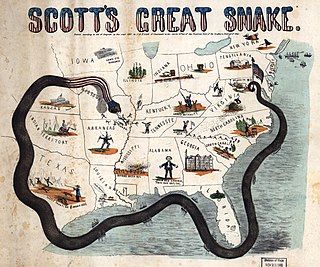 W
WThe Lower Seaboard Theater of the American Civil War encompassed major military and naval operations that occurred near the coastal areas of the Southeastern United States: in Alabama, Florida, Louisiana, Mississippi, South Carolina, and Texas) as well as southern part of the Mississippi River.
 W
WMagnolia Cemetery is a 10-acre (4.0 ha) cemetery in Baton Rouge, Louisiana.
 W
WCSS Manassas, formerly the steam icebreaker Enoch Train, was built in 1855 by James O. Curtis as a twin-screw towboat at Medford, Massachusetts. A New Orleans commission merchant, Captain John A. Stevenson, acquired her for use as a privateer after she was captured by another privateer CSS Ivy. Her fitting out as Manassas was completed at Algiers, Louisiana; her conversion to a ram of a radically modern design made her the first ironclad ship built for the Confederacy.
 W
WThe Mississippi Marine Brigade was a Union Army amphibious unit which included the United States Ram Fleet and operated from November 1862 to August 1864 during the American Civil War. The brigade was established to act swiftly against Confederate forces operating near the Mississippi River and its tributaries. The brigade was commanded by Brigadier General Alfred W. Ellet and operated in coordination with the Mississippi River Squadron during the Union brown-water navy battle against the Confederate River Defense Fleet and land based forces. The brigade was independent of the Union Army and Navy and reported directly to the Secretary of War, Edwin M. Stanton. Despite the name, it was never part of the United States Marine Corps.
 W
WNew Orleans, Louisiana, was the largest city in the South, providing military supplies and thousands of troops for the Confederate States Army. Its location near the mouth of the Mississippi made it a prime target for the Union, both for controlling the huge waterway and crippling the Confederacy’s vital cotton exports.
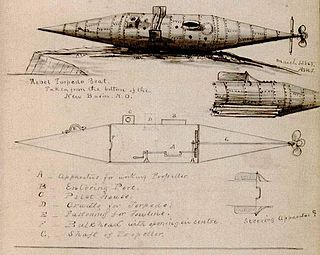 W
WPioneer was the first of three submarines privately developed and paid for by Horace Lawson Hunley, James McClintock, and Baxter Watson.
 W
WThe Port Hudson State Historic Site is located on the Mississippi River north of Baton Rouge in East Feliciana Parish, Louisiana, just outside the limits of Port Hudson and in the vicinity of Jackson. The site preserves a portion of the fortifications and battle area of the longest siege in American history, during the American Civil War from May 23 through July 9, 1863. The state of Louisiana maintains the site, which includes a museum about the siege, artillery displays, redoubts, and interpretive plaques. Historical reenactments are held each year. It was designated a National Historic Landmark in 1974, significant as the first place where African-American military units fought for the Union Army under African-American field leadership.
 W
WThe Red River campaign or Red River expedition comprised a series of battles fought along the Red River in Louisiana during the American Civil War from March 10 to May 22, 1864. The campaign was a Union initiative, fought between approximately 30,000 Union troops under the command of Major General Nathaniel P. Banks, and Confederate troops under the command of Lieutenant General Richard Taylor, whose strength varied from 6,000 to 15,000.
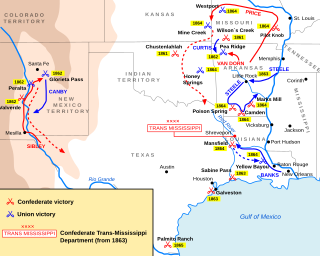 W
WThe Trans-Mississippi Theater of the American Civil War consists of the major military operations west of the Mississippi River. The area is often thought of as excluding the states and territories bordering the Pacific Ocean, which formed the Pacific Coast Theater of the American Civil War (1861–1865).
 W
WThe United States Ram Fleet was a Union Army unit of steam powered ram ships during the American Civil War. The unit was independent of the Union Army and Navy and reported directly to the Secretary of War, Edwin M. Stanton. The ram fleet operated in coordination with the Mississippi River Squadron during the Union brown-water navy battle against the Confederate River Defense Fleet for control of the Mississippi River and its tributaries.
 W
WUSS Varuna (1861) was a heavy steam-powered ship acquired by the Union Navy during the early days of the American Civil War. She was outfitted with powerful 8-inch guns and assigned, as a gunboat, to the Union blockade of the waterways of the Confederate States of America.
 W
WThe Western Theater of the American Civil War encompassed major military operations in the states of Alabama, Georgia, Florida, Mississippi, North Carolina, Kentucky, South Carolina and Tennessee, as well as Louisiana east of the Mississippi River. Operations on the coasts of these states, except for Mobile Bay, are considered part of the Lower Seaboard Theater. Most other operations east of the Appalachian Mountains are part of the Eastern Theater. Operations west of the Mississippi River took place in the Trans-Mississippi Theater.
 W
WYankee Autumn in Acadiana (1979) is a narrative by David C. Edmonds of the invasion of south-western Louisiana by Union troops led by Major General Nathaniel Prentice Banks in October–December 1863. This was Banks' second attempt to conquer Texas after a defeat at Sabine Pass on September 8, 1863.
 W
W W
W W
W W
W W
W W
W